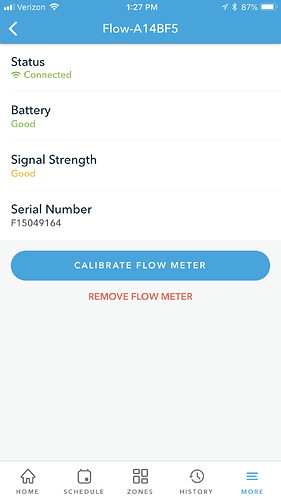I just caught onto this thread so I’m late to the game and from here it looks like you’re all fixed up, which is great! Congratulations on finding a decent workaround @johnny2678. A “good” signal will be adequate going forward so as far as signal strength you should be A-OK.
Also congrats on the cantenna (as they are actually called, or ‘Directional Waveguide Antenna’) suggestion and implementation; they can be a bit fussy, but also amazing. Max recorded range for a cantenna a few years ago was > 2-miles. Cool!
One thing no one seemed to address is the setup of your bury and ground plane(s).
It looks like you have quartz beneath the pipe, etc. RF transmissions are not actually spherical or directional in the real world, they’re more “weird-al”. (Perfectly good word, just made it up myself!). They will use available “ground plane”; they become warped by all sorts of stuff in all sorts of ways; and they end up poochy and pointy all over the place.
Assuming your white rocks are not pure quartz but included (have impurities in them) like trace amounts of miscellaneous metals and other minerals, they would scatter the wave vs. being transparent to the earth ground plane. If that’s the case, even a very slight interruption of the “clear sky”, like the plastic lid, would tend to compromise the signal. Of course, a metal lid would “contain” the signal and it would go from excellent to -0-.
So another potential easy fix, besides the cantenna—should you or anyone else ever decide to try it—would be creating a good ground plane. A flat sheet of metal foil under the entire assemblage, as nearly end-to-end and side-to-side as you could and still remain unwrinkled would do it. The antenna would benefit from that: ___|___. It’s best centered for semispherical (omnidirectional) transmission, but you want directional so off-set would be better. So, if your Rachio is << that << way, you would want it more like <<_______|__. The cantenna does most of this work itself though. (Metal bottom, enclosed metallic reflective cylindrical surface, blah, blah, blah.)
Anyway, for someone who doesn’t have a cantenna handy, a foil floor might also do the trick.






 Looking forward to some more sleuthing.
Looking forward to some more sleuthing.
 Whatever you do, wait for the poly instructions!! DM me your email so I can make sure we get those out to you as soon as they’re ready to go!
Whatever you do, wait for the poly instructions!! DM me your email so I can make sure we get those out to you as soon as they’re ready to go!
